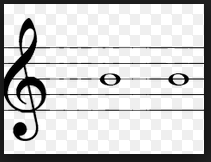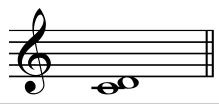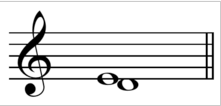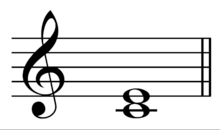
The distance between two notes is an Interval.
This is NOT for beginners. You need some knowledge on music, you need to know the notes, some scales and play piano a more or less.
The 12 sounds in music are:
| C | C# | D | D# | E | F | F# | G | G# | A | A# | B |
You have to learn the same notes with the name of the notes:
| Do | Do# | Re | Re# | Mi | Fa | Fa# | Sol | Sol# | La | La# | Si |
And the same sounds but with flats:
| C | Db | D | Eb | E | F | Gb | G | Ab | A | Bb | B |
And the notes
| Do | Reb | Re | Mib | Mi | Fa | Solb | Sol | Lab | La | Sib | Si |

A Sharp notes is the same as a Flat note.
| Do# is the same as Reb |
| Re# is the same as Mib |
| Fa# is the same as Solb |
| Sol# is the same as Lab |
| La# is the same as Sib |
| C# is the same as Db |
| D# is the same as Eb |
| F# is the same as Gb |
| G# is the same as Ab |
| A# is the same as Bb |
|Notice that you have only 5 notes. When you see the piano it only has 5 black keys
Let's analyse the distance in these notes.
From Do to Re there is ONE note in the middle...Do# or Reb
From Re to Mi there is ONE note in the middle...Re# or Mib
From Mi to Fa there is NOTHING
From Fa to Sol there is ONE note in the middle...Fa# or Solb
From Sol to La there is ONE note in the middle...Sol# or Lab
From La to Si there is ONE note in the middle...La# or Sib
From C to D there is ONE note in the middle...C# or Db

From D to E there is ONE note in the middle...D# or Eb

From E to F there is NOTHING

From F to G there is ONE note in the middle...F# or Gb

From G to A there is ONE note in the middle...G# or Ab

From A to B there is ONE note in the middle...A# or Bb

And we can add another octave to keep putting more notes.
From Do to Re there is ONE note in the middle...Do# or Reb
From Re to Mi there is ONE note in the middle...Re# or Mib
From Mi to Fa there is NOTHING
From Fa to Sol there is ONE note in the middle...Fa# or Solb
From Sol to La there is ONE note in the middle...Sol# or Lab
From La to Si there is ONE note in the middle...La# or Sib
From Si to Do there is NOTHING
From Do to Re there is ONE note in the middle...Do# or Reb
From Re to Mi there is ONE note in the middle...Re# or Mib
From Mi to Fa there is NOTHING
From Fa to Sol there is ONE note in the middle...Fa# or Solb
From Sol to La there is ONE note in the middle...Sol# or Lab
From La to Si there is ONE note in the middle...La# or Sib
From C to D there is ONE note in the middle...C# or Db
From D to E there is ONE note in the middle...D# or Eb
From E to F there is NOTHING
From F to G there is ONE note in the middle...F# or Gb
From G to A there is ONE note in the middle...G# or Ab
From A to B there is ONE note in the middle...A# or Bb
From B to C there is NOTHING
From C to D there is ONE note in the middle...C# or Db
From D to E there is ONE note in the middle...D# or Eb
From E to F there is NOTHING
From F to G there is ONE note in the middle...F# or Gb
From G to A there is ONE note in the middle...G# or Ab
From A to B there is ONE note in the middle...A# or Bb
Is very easy to see the pattern.
| 2 nothing | 3 nothing | 2 nothing | 3 nothing ...
We are going to use the piano a lot, because is very easy to see the notes here.
The piano has white keys and black keys.
It has 5 black keys (The sharps and the flats)
And it has 7 white keys (The natural notes)

Of course it has more than that, but they are the same notes you just repeat the same patter over and over.
The 7 white keys and the 5 black keys is an octave

The Full piano keyboard has 88 keys

Always look at the piano keyboard for reference.

You have 7 white natural keys...
| C | D | E | F | G | A | B |
| 1 | 2 | 3 | 4 | 5 | 6 | 7 |
So there are seven notes, or tones, each note is a different tone, or pitch
From C to D there is ONE tone, or 1 step
In music we call it - WHOLE STEP -
From C to C# there is HALF tone, or HALF step
Because the sharp is raising the note, just a little bit, 1/2 step
In music we call it - HALF STEP -
You can also write it like this:
1 step
1/2 step
Or:
A Whole Step
A Half Step
Always look at the piano keyboard for reference.

Look at the piano. Let's see the half and whole steps thing
| C to D | WHOLE STEP
| D to E | WHOLE STEP
| E to F | 1/2 STEP
| F to G | WHOLE STEP
| G to A | WHOLE STEP
| A to B | WHOLE STEP
| B to C | 1/2 STEP
Can you see the pattern?
| WHOLE | WHOLE | HALF | WHOLE | WHOLE | WHOLE | HALF |
This pattern is a SCALE, is the C Scale


As you can see the distance from C to D is BIGGER than the distance from E to F
From C to D there is one note in the middle
From E to F there is no note in the middle
To start learning the intervals we need to see the notes
We need to measure the distance from one note to another
And you will see that you have a bigger distance which is called "MAJOR"
And a smaller distance which is called "minor"
Let's see the intervals in the next lesson

Let's start with the first note | C | or | Do | (is the same)
If you have two notes, and both of them is the same note...
Then there is no distance between them, is the same sound
In music we call it UNISON
It means one sound
So from C to C, ( The same C ) is a UNISON.

Now you know that any two notes that are the same note, is a unison.
Here we have two notes, both are the same note, B and B

So the distance from the first note B and the second note B is a unison
As you can see we can have any two notes, and if they are the same then is a unison.
Here we have three notes, all the notes are A

From the first A ( a quarter note ) to the second A ( an eighth note ) is a Unison
And also there is a unison from the two eighth notes at the end
Now you know your first INTERVAL

And finally let's see the Major and Minor Intervals
The distance from C to D is a SECOND
Because you have TWO different notes, right?
But the distance from C to Db is also a SECOND
You also have two notes, correct?
So how do you know the difference?
-------------------------------------
If you look at the piano, you can see that the distance from C to D is BIGGER than the distance from C to Db
So C to D is a "MAJOR SECOND"
And C to Db is a "minor SECOND"
-------------------------------------
Here you can see some Major Seconds
All of them are harmonic intervals ( Because you play the two notes at the same time)
And all of them are ascending intervals ( Because they are going up)

| C to D |
| D to E |
| F to G |
| G to A |
| A to B |
-------------------------------------
Here you can see some minor Seconds
All of them are harmonic intervals ( Because you play the two notes at the same time)
And all of them are ascending intervals ( Because they are going up)

| E to F |
| B to C |

Now let's see...
-------------------------------------
You have Major an minor intervals
You have melodic and harmonic intervals
And you have ascending and descending intervals
And this rules are for all intervals
-------------------------------------
Always look at the piano
-------------------------------------
From | D to E | ... | is a major second |
From | F to G | ... | is a major second |
From | C# to D | ... | is a minor second |
From | A to B | ... | is a major second |
From | G to A | ... | is a major second |
From | F to Gb | ... | is a minor second |
From | A to G | ... | is a major second |
-------------------------------------
From | D to E | ... | What is it? |
From | G to Ab | ... | What is it? |
From | Eb to F | ... | What is it? |
From | E to F# | ... | What is it? |
From | B to C# | ... | What is it? |
From | Bb to C | ... | What is it? |
-------------------------------------
When we talk about intervals, we usually mean from low to high
The distance from C to D is a major second (going UP)
but if we go down from C to the lower D, then the distance is MUCH BIGGER
So when we ask, the distance from F to G? always think, going up

Now let's see the second. Second means two, so you need two notes
But the notes must be different
Here you can see a second, from C to D

Here you have another second, from E to D

------------------------------------------------
This interval is going from a LOW note to a HIGHER note
So is going up, In music we call it "Ascending Intervals"
All the intervals that are going from low to high are ascending

------------------------------------------------
Now this interval is going from a HIGH note to a lower note
So is going down, In music we call it "Descending Intervals"
All the intervals that are going from high to low are descending


Another thing to notice here is that both notes are played at the same time
You play the C and the D at the same time
When you play two notes at the same time is a HARMONIC INTERVAL

------------------------------------------------
When you play one note, and then the other, one note at a time
Then the interval is a MELODIC INTERVAL
Here you can see a melodic and a harmonic interval

The thirds are probably the most important intervals

Let's keep looking at the C scale
| C to D | WHOLE STEP
| D to E | WHOLE STEP
| E to F | 1/2 STEP
| F to G | WHOLE STEP
| G to A | WHOLE STEP
| A to B | WHOLE STEP
| B to C | 1/2 STEP
From C to E there is a third

Notice that the C is on a line of the staff
And the E is also on a line
You can also tell, that is a third if the notes are from line to line
Look at this music, all the intervals here are 3rds
They are either from line to line on the staff
Or space to space on the staff

----------------------------------------
We also have Major 3rds and minor 3rds
A major third is like this | M3 |
A minor third is like this | m3 |
----------------------------------------
From C to E is a M3
From C to Eb is a m3
Why?
----------------------------------------
| C to E | You have three notes, C - D - E
So that is why is a 3rd
But also look at this
| C to Eb | You have three notes, C - D - Eb
So that is why is also a 3rd
----------------------------------------
Now when you count ALL the notes, including the sharp notes, then you can see the difference.
| C to E | You have 5 notes, C - C# - D - D# - E
And the next
| C to Eb | You have 4 notes, C - Db - D - Eb
One has 5 notes, and the other has 4 notes
----------------------------------------
| C to E | M3 - it has 5 notes
| C to Eb | m3 - it has 4 notes
---------------------------------------------------------------------------
Watch this video first
--------------------------------------------------
Notice how the 2nds are close to each other
One note is on a line, and the other is on a space
And the two notes are right next to each other, really close
You should listen to the video again and pay attention to the sounds
Listen how the m2 and M2 sounds like.
---------------------------------------------------------------------------
Now the interval of 3rds is very important
Listen to the video and listen how they sound
The notes are not as close as the seconds, but still they are close
Notice how they are from line to line, or from space to space
Every 3rd will be like that, m3 or M3 both they look similar
From line to line
From space to space
---------------------------------------------------------------------------
If you really want to learn, you should spend time making many m2 and m3 and M2 and M3
Write one note, any note
Then under the note write m2, or M3, write an interval
Then see if you can do it.
Then play it and listen to the sound.
Do this with at least 100 notes
The distance from "Do to Mib" is?
------------------------------
The distance from "Do to Re" is?
------------------------------
The distance from "Do to Mi" is?
------------------------------
The distance from "Do to Reb" is?
------------------------------
How many different sounds you have in one octave?
------------------------------
Say the name of the notes in the C Scale?
------------------------------
When the notes are going up, you say they are in a ----------- order?
------------------------------
| 1 | From C to | C | Unison | 1 |
|---|---|---|---|---|
| 2 | From C to | Db | minor second | m2 |
| 3 | From C to | D | Major Second | M2 |
| 4 | From C to | Eb | minor third | m3 |
| 5 | From C to | E | Major Third | M3 |
| 6 | From C to | F | Perfect Fourth | P4 |
| 7 | From C to | F# | Augmented Fourth | Aug4 |
| 7 | From C to | Gb | diminished Fifth | dim5 |
| 8 | From C to | G | Perfect Fifth | P5 |
| 9 | From C to | Ab | minor sixth | m6 |
| 10 | From C to | A | Major Sixth | M6 |
| 11 | From C to | Bb | minor seventh | m7 |
| 12 | From C to | B | Major Seventh | M7 |
| 13 | From C to | High C | Octave | 8 |
From C to the same C is a "Unison" and from C to the high C is "an Octave" this is easy to remember.
Intervals of 2nd and 3rd and 6th and 7th, you have Major and minor intervals.
Intervals of 4th and 5th they are perfect, all the time.
The "Augmented Fourth or diminished fifth" sounds the same, is the same interval, you use it for different scales. Is like a synonymous, a word that spells different but means the same.
Notice also the numbers on the left, you have to go all the way to 13. You don't have 13 notes, but No. 13 is the same as No. 1.
When you have all the notes in the piano, From C to High C is a "Chromatic Scale"